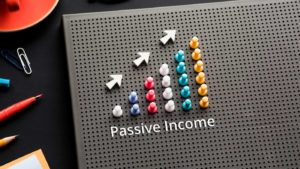Earning a passive income sounds too good to be true. As the phrase suggests, it means earning regular sums of money without having to lift a finger.
All too often though, that passive income takes up time and energy. That’s not the case when investing in dividend-paying FTSE 100 shares. True, there’s a bit of prep involved. But once I’ve added a few companies to my Stocks and Shares ISA, I can sit back and let my dividends compound and grow, free of tax, for years.
I love it when a dividend pops into my trading account. The money just appears, on a regular basis. I don’t have to do anything.
Regular dividends
I automatically reinvest every dividend back into the stock that paid it. That way I buy my more shares, which pay more dividends, which I reinvest, in an endless virtuous circle. It’s no effort at all.
Please note that tax treatment depends on the individual circumstances of each client and may be subject to change in future. The content in this article is provided for information purposes only. It is not intended to be, neither does it constitute, any form of tax advice. Readers are responsible for carrying out their own due diligence and for obtaining professional advice before making any investment decisions.
Now let’s say I could muster £11k today, by combining various savings pots and my next pay cheque. I wouldn’t put it all into one stock. That would be too risky. If the company runs into trouble and the share price falls or it cuts the dividend, I’d kick myself.
Instead, I’d spread it across four or five solid UK blue-chips. I’d aim for those with a track record of increasing their dividends over the years. This suggests they’re well-run enterprises that generate a steady stream of profits, revenues and cash flows. With luck, they’ll pay me a high and rising income.
I think FTSE 100 bank HSBC Holdings (LSE: HSBA) looks attractive today, with a trailing yield of 7.37%. That’s actually forecast to increase to a blockbuster 9.2% this year.
When I see a high income like that, I get a little suspicious. Is it sustainable? Well, last year HSBC made a bumper profit of $30.3bn. That was $13.3bn more than the year before, boosted by today’s high interest rates.
FTSE 100 high-yielder
The board was flush with cash and rewarded shareholders with its highest ever dividend. It also lavished them with share buybacks worth $9bn in total. It may not always be this generous, but it’s clearly keen to keep shareholders happy if it can.
There are risks, as with any stock. HSBC’s increasingly focused on China, whose economy has been struggling. This puts it on the front line of US/China tensions over trade and Taiwan. Also, once interest rates fall, revenues may retreat.
However, that yield is hard to resist. Especially since it’s covered 1.9 times by earnings. Plus the shares look cheap trading at 7.4 times earnings, below the FTSE average of 12.3 times. I’ll buy HSBC shares as soon as I have the cash.
Using its trailing 7.2% yield as a benchmark, that would give me passive income of £792 in year one. If I reinvest all my dividends, then my £11k would grow to £62,555 after 25 years.
If the HSBC share price grew at 5% a year on average as well, I’d have £195,530. At that point, all things being equal, I’d potentially get dividend income of £14,078 a year, or £1,173 a month.
That’s a pretty good second income from an initial £11k. And it involved minimal effort on my part.
This post was originally published on Motley Fool







